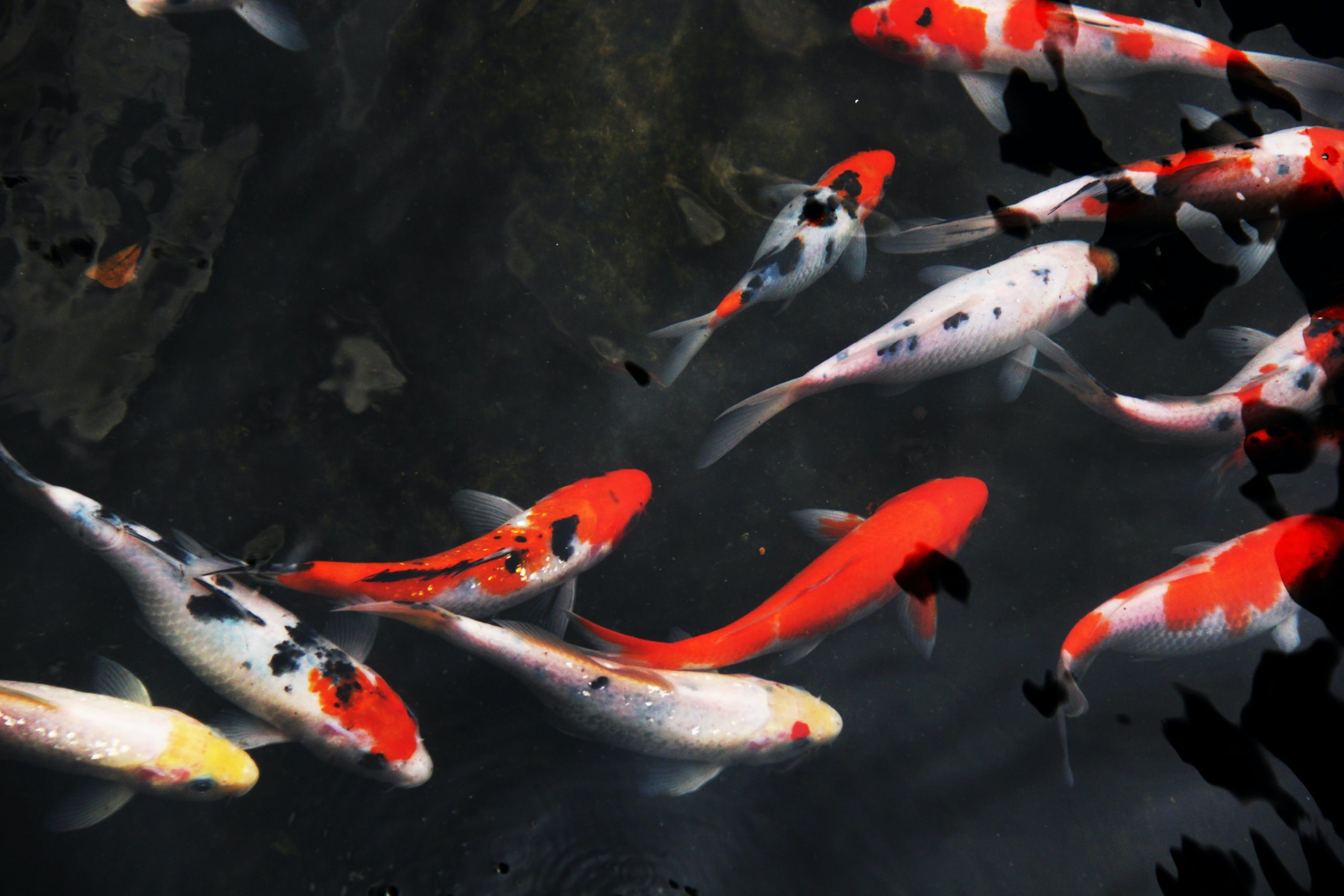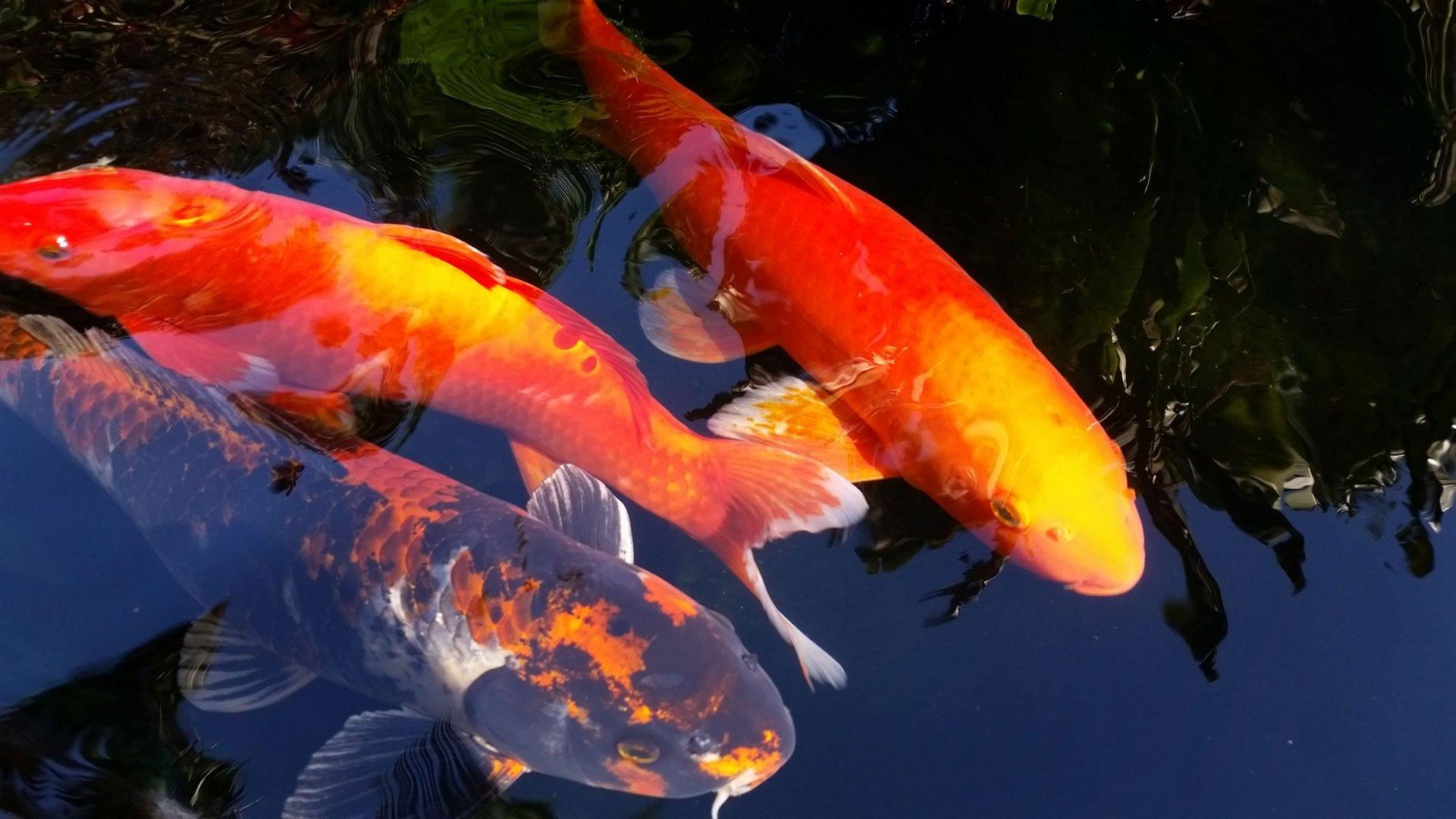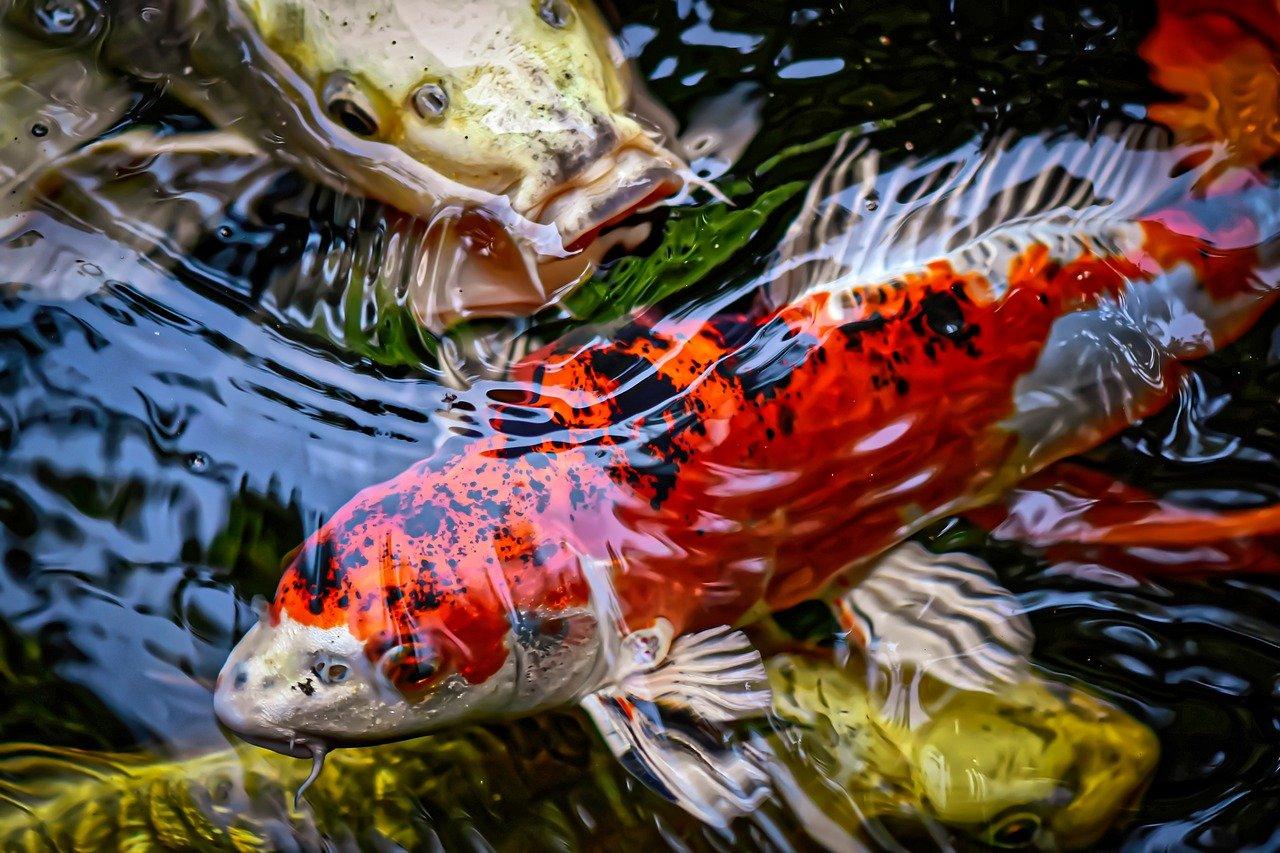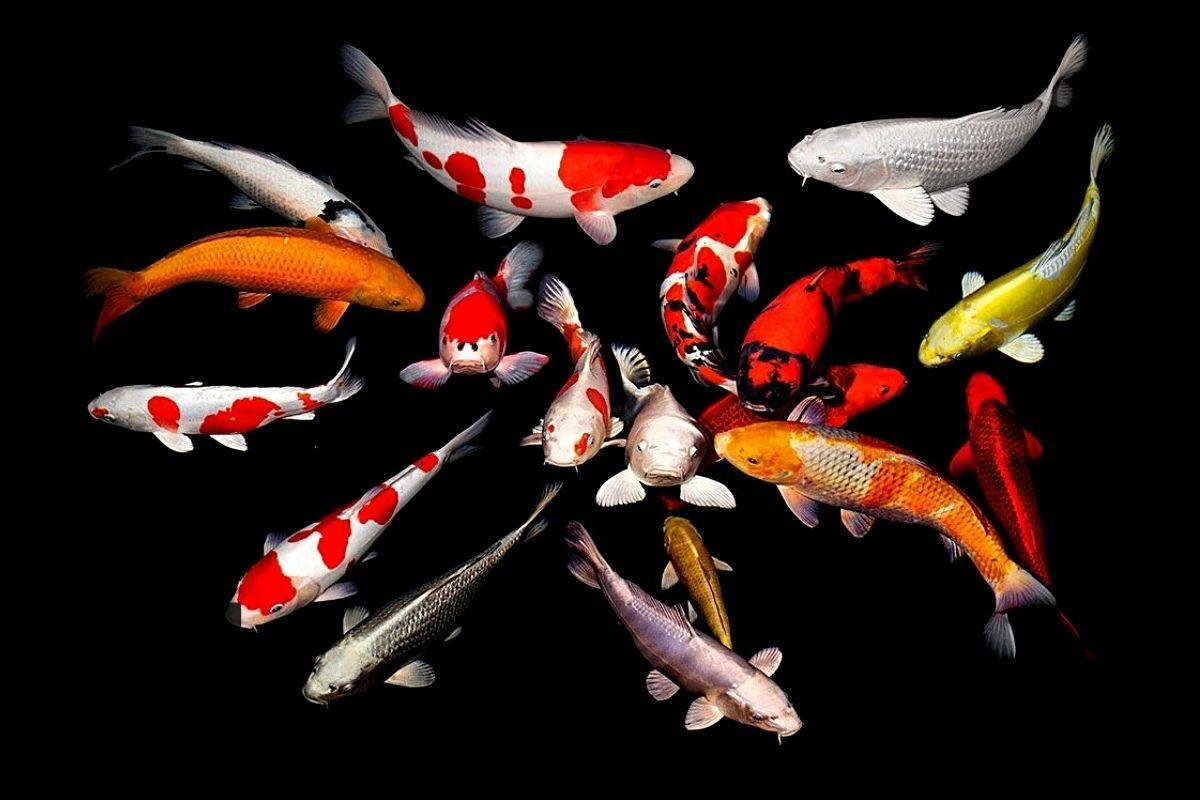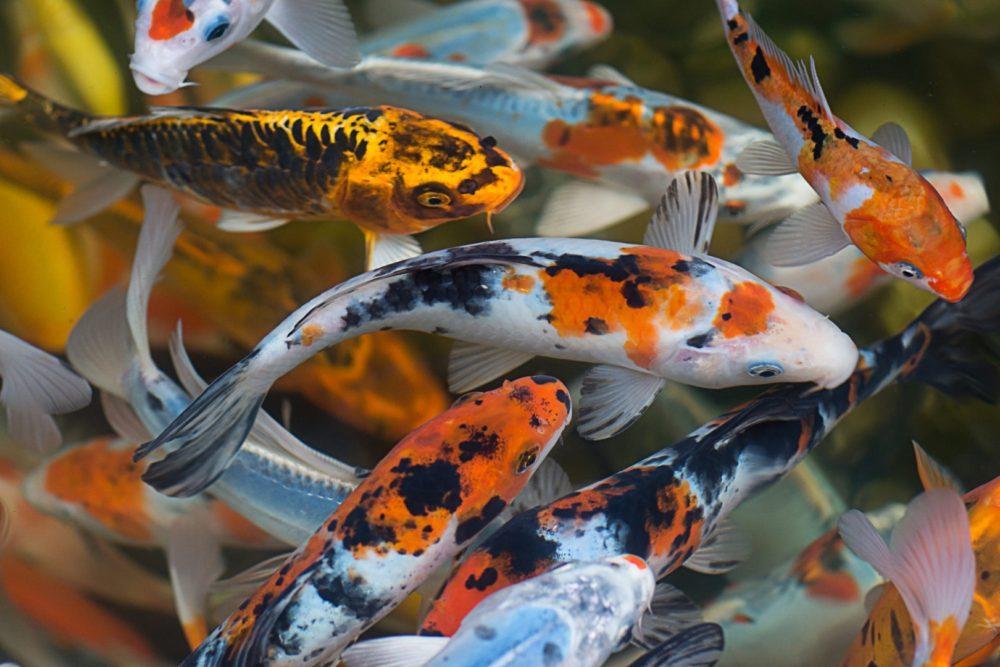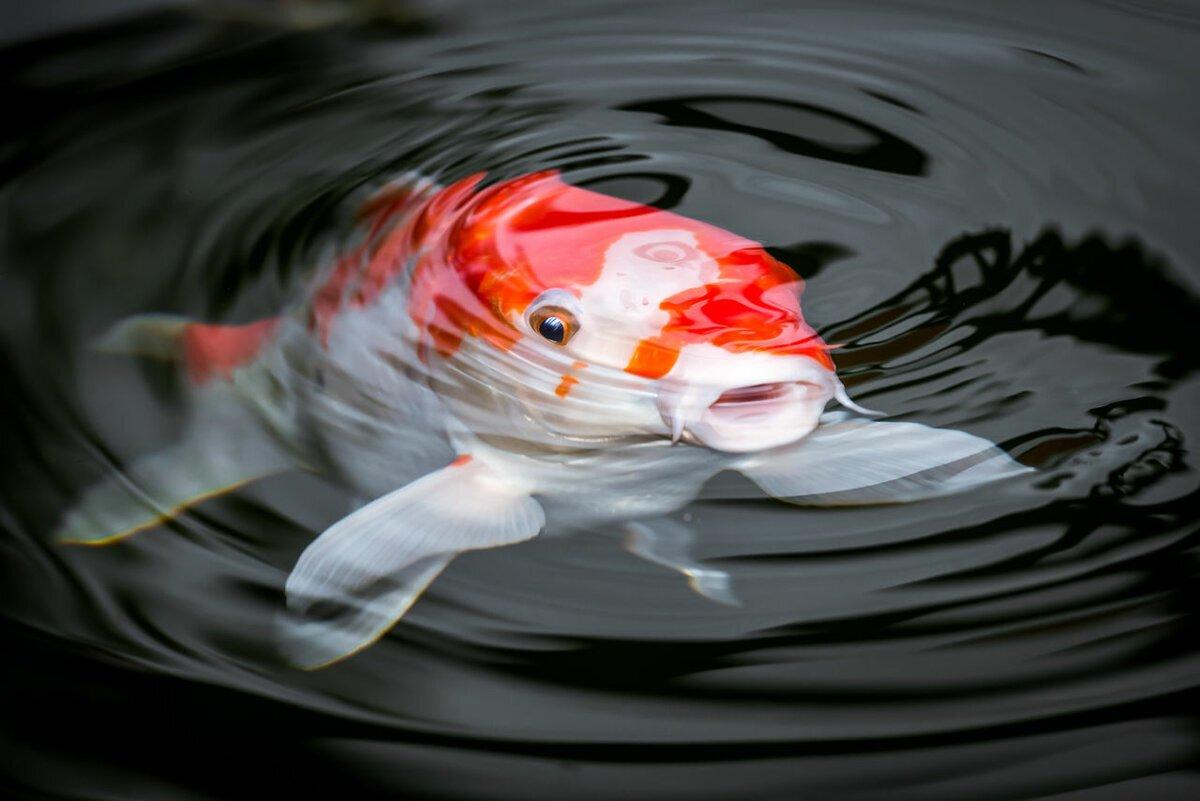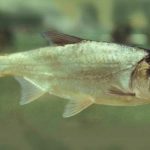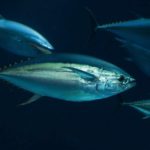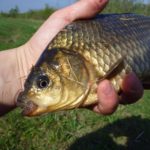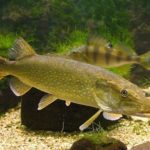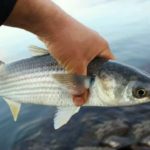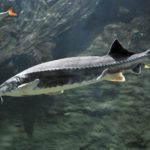The practice of arranging decorative ponds in Japan has existed for many years. It is believed that the presence of pond fish can bring joy, long life and protect a person from danger. Koi, or brocade carp, are the most preferred species of pond fish in Japan and around the world. However, in order for these fish to continue to delight with their appearance, you need to learn everything about their contents.
Description of the fish
Japanese koi carp is an artificially bred ornamental variety that came from the domesticated carp, which belongs to the Amur subspecies.For centuries, carps have been an important fish for the industry due to their hardiness and delicious taste. As early as the 15th and 16th centuries, people raised them in man-made ponds for food. In some mountainous regions it was the only available source of animal protein.
A series of genetic changes have produced fish with unique and vibrant colors. Instead of being eaten, these animals were used to decorate water gardens. These days it is difficult to find a Japanese garden that does not have koi carp swimming in its pond. They are common everywhere - from small courtyards to large city parks. They are also often found near temples built in honor of Buddha - these ponds are ideal for reflection and contemplation.
The Japanese mentality has been greatly influenced by the great admiration for koi carp. Pisces are considered signs of friendship and love, which is why the word "koi" is very similar to a Japanese word that can be translated as "love" or "friendliness."
The calmness that koi display while waiting to be cooked in the kitchen impressed the Japanese so much that they made these fish the central symbol of Boys' Day celebrations on the fifth day of May every year. On this holiday, all families who have sons hang coinobori - paper or textile images of koi carp - outside their houses to symbolize their sons. In this case, the longer figures represent older boys.
There are many stories about how this tradition began, one of them tells about a brave carp who managed to overcome all the difficulties and trials during a journey to the sacred river and was reborn into a powerful dragon.Another legend tells how carp helped Empress Jingu find her way through Korea during her aggressive campaigns.
Initially, it was the natives of China who mastered the breeding of ornamental carp species. The most impressive fish were given to the gardens of the nobility, and the knowledge of how to breed them was passed down by word of mouth from father to son. Eventually, Japanese breeders adopted this tradition and used their hard work, persistence and patience to create a wide range of koi carp with variations in coloration, fin shape and size. The first ever carp exhibition was held in nineteen fourteen, where people were able to see some of the best specimens of this species.
These days, koi carp are bred in many countries around the world, but Japan remains the leader in setting the trends. There, rules were developed for assessing the appearance of koi, allowing one to judge the structure of the body, the shade and pattern of the scales, as well as overall quality.
Fish with a full body (often females) and beautifully located fins that are identical on both sides are highly valued. Ideal representatives have scales without defects; the color spots are easily distinguishable and harmonious - the larger the fish, the larger its pattern. Equally important is how she behaves while swimming in the water - her posture and movements are also taken into account, as well as her general appearance. Size is also a significant factor; The Japanese do not recognize a fish as a “real” carp if it is less than 45-55 cm in length. The largest koi listed on the registry measured 120 cm in length and weighed about 40 kg; some breeding specimens can cost thousands of dollars each.
In addition to their excellent decorative qualities, koi carps are known for their hardiness and ease of care. This species is known for its longevity; So, the star of Japan - a fish named Hanako lived an amazing 226 years! Although this is an exceptional case, under the right conditions, koi carp can live up to five decades.
It is impossible to ignore the impressive mental abilities of koi carp. These sociable creatures quickly get to know their owner and calmly accept food directly from his hands. They also don't mind being stroked on the back and rarely try to swim away. Some individuals even exhibit distinct personal qualities—something that can only be seen in one specific individual. Koi are relatively easy to train, they can easily carry out up to 20 commands.
Enthusiastic koi carp breeders can be located almost anywhere on the planet. Associations have united millions of aquarists around the world. In addition, they organize local and international events to showcase the most attractive specimens of this species, the “cream of the breed.” The Japanese joke about how their koi have become a global phenomenon, saying they have discovered a new way to conquer the world - Nishikigoi (which literally translates to "colored carp").
Appearance of carp
Thanks to a long period of selective breeding, Japanese koi have evolved greatly in terms of shape and coloration, no longer resembling their original “look.”Despite these changes, some features, such as small antennae-like appendages, remained unchanged in brocade fish. Colored carp grown in ponds reach a length of about sixty cm and weigh an average of six kg.
The head is large, and in females it is noticeably wider. The body is slim. The tail fin is single and strong, which helps it move easily in the water. All fins are equally spaced on the body and well formed. The color of the body depends on the specific species, and may also depend on external conditions such as water quality, light intensity and food quality.
Main breeds
Centuries of selective breeding have resulted in the development of 80 different varieties of Chinese koi carp, which are now classified into 16 categories based on common traits. At the same time, a huge variety of colors can be classified into several fundamental shades: cream, yellow, orange, white, black, red and blue. The presence or absence of a particular color depends on how much pigment is present in the scales - melanophores (black), xanthophores (yellow-orange) and guanophores (which give a shimmering effect). For example, orange varieties lack melanophores, while blue varieties have only a small number of xanthophores; white varieties contain neither melanophores nor xanthophores.
Let's look at the different varieties of koi carp in terms of their coloration:
- Asagi has a dark blue back with a light mesh pattern, and red sides, belly and fins.
- The Shusui variety is similar, but lacks scales.
- Beccos are characterized by a whitish, purple or yellow body with dark markings.
- Goshiki, on the other hand, are black with streaks of various other colors such as red, white, brown and blue.
- Doitsu is a type that was created by crossing German species of "naked" carp and can be any color without scales or with only some rows, resembling a mirror carp.
- Kawarimono is another group that includes carp without a metallic sheen that does not fit into the other categories.
- Kin-Gin-Rin display gold or silver scales for added shine.
- Koromo are distinguished by dark patterns on top of a basic red hue.
- Another equally important species is Kohaku, which is the most famous species - its white body is mottled with bright purple or red-orange spots that are clearly defined.
- Ogon is distinguished by single-colored bodies without spots. It can be red, orange, gray, yellow or light yellow.
- Shusui is blue on the back, with noticeable red spots on the sides.
- Taishe Sankyo, named after Emperor Taishe, has a white body with black and red spots.
- Tanchos are especially unique as they are white with a single red spot, reminiscent of the Japanese flag, on their head.
- Utsurimono has a black body covered in stripes of either white, red or yellow.
- Hikari moemono are characterized by metallic golden-silver scales.
- Showa Sanseku has black scales with spots of both red and white; they were also named after Emperor Showa.
- Finally, Kumonryu is known as "dragon fish" in Japan; It is an unremarkable black fish in appearance, but with white spots all over the body, on the head and in the abdomen.
How to keep fish
Koi kept in captivity can live an average of 35 years, which is a fairly long lifespan.Some breeds of red koi, which are genetically closer to their wild carp ancestor, can reach 120 centimeters in length; however, the typical size of a koi is 90-100 centimeters. Given this, it is better to keep koi in a pond rather than an aquarium.
In aquarium
It is not recommended to keep koi in an aquarium as their beautiful colors are best seen from above. Therefore, for aquarium breeding, it is recommended to choose goldfish instead.
If you still decide to have these lucky fish, then remember that for koi carp you need to use a larger aquarium. You should choose a capacity of at least 500 liters. Then the number of fish can be calculated using the formula: one centimeter of body length per five liters of water.
The key to success when keeping koi is to have a well-functioning filtration system that takes into account both mechanical and biological factors. It is recommended to install a flow-through system, but if this is not possible, then a 30% water change should be performed once a week. Koi are hardy fish that can tolerate a range of temperatures (15-30°C) and water hardness/acidity levels (soft to medium hard with acidity around 7).
The lighting should be sufficient for the fish to look their best. It is wise to install an aquarium UV sterilizer to stop the growth of germs and algae. It is worthwhile to establish a good nitrogen cycle in the aquarium - without the presence of ammonia and nitrites. And the concentration of nitrates should not exceed 40 mg/l. For the substrate, it is ideal to use a fine or medium grain size.
In a pond
Obviously, the best environment for the growth and development of koi is a pond, given their potential size of 100 cm. No matter how large an aquarium is, it cannot give these ornamental fish enough space to fully feel free and show off their beauty.
It is recommended that the pond be 3m x 2.5m x 1.4m as these fish are very active swimmers; the larger the pond, the better. It is ideally located in a quiet location on the site and is built either on a concrete base or using a soft waterproofing material.
In a koi pond, it is important to provide effective two-stage filtration, or rather biological and mechanical types. The first helps rid the water of suspended particles and solids, and the second helps start the nitrogen cycle. Additional oxygenation is necessary when there are a lot of fish in the reservoir, the water temperature is high, or during the winter months.
Koi can tolerate water temperatures up to +4 °C; at the same time, their vital processes become slower; and the depth of the pond should be 1.4 m so that it does not freeze completely. It is permissible to use sedge, water irises and other moisture-loving species as plants; reeds and water lilies can be placed on top of the surface, but they must be firmly anchored as koi like to dig into the substrate.
Who is better to place with?
When keeping koi in ponds, the options for fish you can keep as neighbors are limited. Not many species of fish can thrive in such an environment, and those that survive are not as brightly colored as koi, making them unsuitable for an ornamental pond.The ideal choice as neighbors are goldfish species with an elongated, torpedo-shaped body (comets, veiled shubunkins) and golden orphs.
When choosing aquarium mates for koi carp, size is the main priority. Any fish small enough to fit in a carr's mouth will eventually be eaten. Good aquarium mates include fast-swimming goldfish without long fins or protruding body parts, massive species of catfish and some iris.
How to feed carp
Koi are fish that consume both animal and plant matter to satisfy their nutritional needs. To make the fish look even brighter, use food containing natural color enhancers. Ideally, the food is scattered on top of the water to make it easier for them to find and swallow. Many Koi owners find that their pets get along so well with them that they can take food directly from their hands.
Tetra provides a line of quality, complete Terta Pond Koi food specifically for the many Koi carp enthusiasts. Each food is balanced in composition and contains all the necessary vitamins and nutrients to strengthen the fish’s immunity. The use of high-quality ingredients makes the food easily digestible, which is beneficial for maintaining clean water in ponds and aquariums.
Pellets come in different sizes, making it easy to find the right food for each phase of the fish's life cycle. Food containing naturally occurring colors will greatly enhance the natural colors of your koi, such as red, yellow and orange. It wouldn't be unreasonable to pamper your pets with a combination of krill meat and seaweed.
Reproduction
Farming koi fish is essentially identical to farming other types of carp. The most difficult thing is to choose suitable parents and carry out the necessary selection process in order to obtain juveniles with bright multi-colored colors and high survival rate.
Koi carp reach sexual maturity between 3 and 6 years of age. It is impossible to determine the sex of fish until they reach a size of 22-26 cm. To accurately determine the sex, a person will have to pay attention to certain signs. Males have sharp front fins, and during the spawning period, dense growths appear on their gills, which feel like semolina to the touch. Females are larger and rounder, with a massive body shape.
The structure of the anus will indicate a clear difference between the sexes. To completely determine the gender, place the koi carp in a container and wait until it calms down. Then carefully pick him up and turn him over onto his back. In males, the anuses are oblong, extending towards the tail, while in females the anus area has round holes. Reproductive products will protrude when the sides are patted in males, but with the same movements in females no discharge occurs.
It is recommended to mate one female with two or three males to increase the percentage of eggs fertilized. Koi carp are stimulated to reproduce when there is a sudden change in water conditions.The spawning season for such fish begins in late spring and early spring, when temperatures reach at least 20°C.
When there is a large population of koi carp in a pond, mass spawning often occurs; but experienced breeders try to limit it, since the color of the offspring is lighter. The best option would be to transfer the breeders to another tank and regularly change the water, as well as feeding them protein-rich feed.
Once the eggs are laid, the adults must be removed from the pond because they will consume their own offspring. The water in a pond with newly hatched fish should be well aerated. Six to seven days after laying, the larvae will emerge and cling to the pond walls for two to three days until they have used up all their yolk sacs. After this, they can move freely and are ready to take food from the pond owner.
It is important to note that breeding koi carp at home is quite difficult, as it requires very large tanks or aquariums.

